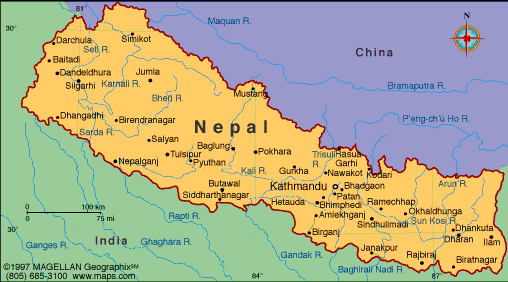Agriculture is the major occupation for the Nepalese and has been throughout its history but due to high amount of people leaving for foreign employment as well as climate and social/political problems it has slowly started to decline . Lets look at the current status of agriculture in Nepal :

Nepal’s agriculture is dominated by food grains, followed by livestock and cash crops. Food grains contribute more than one third of agricultural output while the contribution of the livestock sector is one fourth. The production of pulses, spices, fruits and vegetables has been increasing rapidly in recent years. Vegetable production has increased remarkably. Production of livestock products is also increasing. Overall, productivity has improved in both cereals and cash crops. In most parts of the country, farming practices are still conventional and farmers plant a number of species of plants and their varieties, and also rear different types of animals in their farms. Due to the traditional farming system and small size of landholding, labour productivity is low. Frustrated with low labour productivity and living standard in agriculture, the labour force is shifting from agriculture to non-agricultural sectors. Migration from farm to urban centres and foreign countries is getting popular. The marketable surplus of the produce from such small farms is very low. This has led to limited exports of agricultural products—that too largely confined to neighbouring countries. National policies emphasize expansion of agricultural trade.
Farmers in most developed countries are involved in large-scale commercial farming, both rain-fed and irrigation-based. Their volume of transaction is large and chain of marketing is shorter. Hence, a lower per-unit cost. In addition, they receive substantial government support aimed at boosting domestic production and exports. The primary goal of developed countries’ agricultural policies is geared towards balancing the income of the farming population—which makes up a small proportion of the total population— with that of those employed in the industrial and services sectors. Inadequacy of appropriate agro-technology and modern farm inputs like irrigation and fertilizer has constrained the growth of agricultural production in Nepal. Irrigation covers 43 percent of the arable land.

Year round irrigation facilities are, however, limited to less than 25 per cent of the arable land. Efficient harvesting of underground water, particularly in the Tarai (southern plains), and surface sources in lower hills and valleys can make available irrigation facilities for up to 67 percent of the arable land. The removal of subsidy on shallow tube wells and the limited investment on surface irrigation, however, are constraining the exploitation of the irrigation potential. Use of fertilizer is very low, hovering at just 35 kg per ha. In advance countries, use of up to 300 kg per ha is reported to yield good harvests. It was strongly believed that supply constraint and high price were the major reasons for the low use of fertilizer in Nepal. To overcome the supply constraint, the fertilizer trade was deregulated. As a result, the supply of fertilizer improved in accessible areas. But fertilizer quality became the greatest concern after liberalization. The entry of low-quality fertilizers into Nepal through the open border with India is said to have affected agricultural productivity, but data on quality are not available to substantiate this. Liberalization of Nepal’s agricultural sector has made it vulnerable to external shocks. Domestic agricultural products are having to compete with cheap and subsidized imports. This has had adverse effects on production and the food security situation.

During the period of conflict (1996–2006), agriculture was the most enduring sector of the economy. But, as with other sectors, the growth of the agricultural sector also remained low. In the post-conflict period, however, the performance of agriculture has improved. Agricultural growth in Fiscal Year 2007/08 was recorded at 5.65 percent, slightly above the overall economic growth of 5.60 percent. Now, reforms in agriculture are urgently needed to address the aspirations of the vast majority of the people involved in agriculture.

Guys,
You are using a picture without any source or credit. Please delete it.
Source: http://www.ypard.net/2014-march-4/what-does-smallholder-family-farming-mean
LikeLike